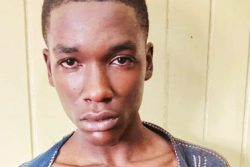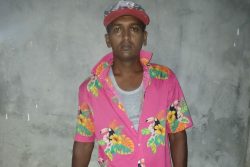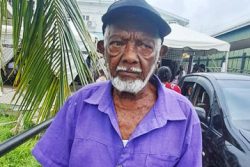The shooting to death of a common burglar − Mark Heywood called Mark King − by the police a fortnight ago has once again raised the question of the use of minimum force in everyday law enforcement. Heywood was shot three times in the face by the police as he and others were trying to escape after stealing cycles from the Crescent Cycle Store in King Street. According to the police, a member of the gang shot at the police who returned fire.
On some occasions, there has been no evidence that the lives of the policemen were in danger. Such was the case of Keith Mitchell who is alleged to have stolen a windscreen from a minibus lodged at Police Traffic Headquarters, Eve Leary, in May. Two policemen chased the man on foot from Eve Leary to Queenstown and shot him dead “during efforts” to make an arrest. There was no report that Mitchell was armed.
Clifford Gladstone, a small-scale marijuana farmer of Kimbia waterfront, Berbice River, was shot by police who claimed that they were “confronted with resistance” during their attempt to arrest him. Gladstone seemed to have been unarmed.
Deranged persons have also been killed. Floyd ‘Shaggy’ Usher, a cow-minder of unsound mind of No. 30 Village, WCB, was shot dead after throwing stones and hurling expletives at two policemen investigating a complaint in mid-June. The police said that the man was shot “during efforts” to arrest him after he attacked them with a cutlass. A couple of years ago, similarly, Brian Luckie known as ‘Kussum’ – homeless and of unsound mind − was shot dead by one of two armed policemen whom he reportedly attacked with a bread knife on Robb Street.
What threat could running thieves or raving madmen pose to the policemen who killed them? The question might well be asked, therefore, whether the police should, or do, shoot to kill. If it becomes necessary to shoot a suspect, should not the police aim at their legs or arms rather than their faces or foreheads, in order to disable them without endangering their lives.
Akeem Andrews, for example, was shot “in his forehead” by a lone, off-duty member of the Presidential Guard in plain clothes. The policeman claimed that he was investigating an armed robbery on Main Street in April when Andrews attacked him with a knife.
Given the protracted and traumatic criminal violence on the East Coast, there is understandably little sympathy for bandits. No tears were shed in May when Courtney James, a wanted man, was shot dead by a policeman after he was identified as a passenger in a minibus. A policeman pursued him on foot and shot him in the chest and abdomen “during an exchange of gunfire.”
It seems, though, that the police have too often killed, rather than wounded, petty criminals as well as more feral felons. The police need to be taught that, as important as the protection of property is, the right to life is the most elemental of all fundamental rights enshrined in the constitution. Every person in Guyana has a right to life and both the state and society have a public interest in the life of every citizen, regardless of the accusations made against them.
Especially in cases where the police outnumber criminals, or are armed with more lethal weapons, the aim must be to arrest the culprits and bring them to trial. The police should rethink their ‘shoot-to-kill’ doctrine which often results in the deaths of persons who can be rendered harmless by non-fatal shots to the body.





